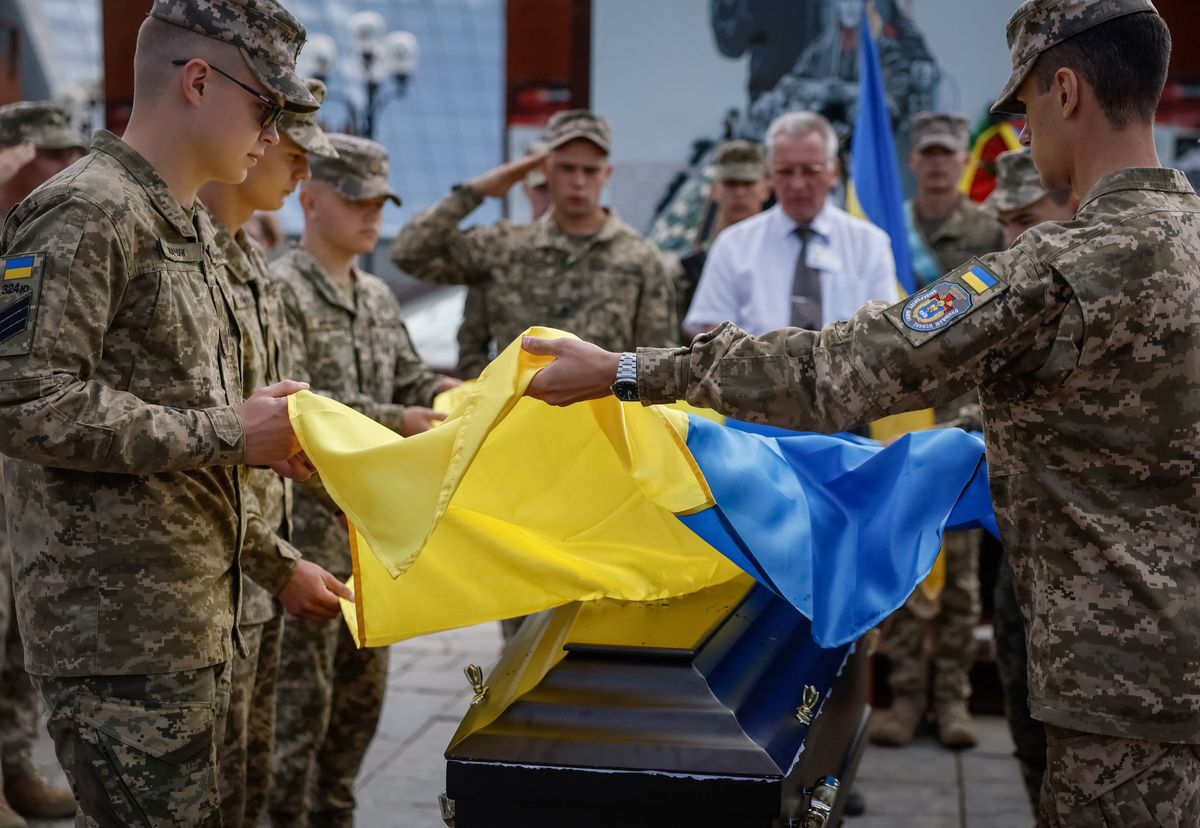What are cluster bombs, and what do they have to do with Russia and Ukraine?
The size of the land range they cover can vary, and the exact direction and targets these smaller bombs hit can’t be fully controlled.

A few minutes every morning is all you need.
Stay up to date on the world's Headlines and Human Stories. It's fun, it's factual, it's fluff-free.
In 2022, over 300 people died and over 600 were injured by cluster munitions (or cluster bombs) in Ukraine, surpassing Syria for the highest number of casualties from these weapons. This uptick is because of Russia’s widespread use of them.
In July, the US agreed to send Ukraine cluster munitions to help its war effort. And earlier this week, it was reported the US also moved toward arming Ukraine with long-range missiles carrying these bombs. While many of Ukraine’s allies are arming it in different ways, this move is particularly controversial, and that’s because cluster bombs are a touchy subject.
So how does a cluster bomb work? One munition bundle is released mid-air (via plane or missile), and then it releases dozens of smaller bombs that land all over an area of land. The size of the land range they cover can vary, and the exact direction and targets these smaller bombs hit can’t be fully controlled, which makes them more dangerous.
“They pose a huge danger to kids that pick them up; to farmers with their plows; to refugees returning to their homes, digging through the rubble; all sorts of civilians,” explains Bonnie Docherty, senior researcher in the arms division at Human Rights Watch and the director of the Armed Conflict and Civilian Protection Initiative at Harvard Law School. “There’s a whole host of long-term dangers, as well as the immediate dangers at the time of attack.”
In 2008, an international treaty was made banning the use, creation, transfer and build-up of cluster munitions. While over 100 countries signed that agreement, the US, Russia and Ukraine didn’t. But, the US has been making progress on destroying its stock of cluster bombs and removing and replacing them from its artillery systems. It’s also spent decades funding the cleanup of the unexploded cluster bombs it dropped on Laos during the Vietnam War.
“The fact that you've got to spend millions and millions of dollars 50 years later to try to clean up the damage that was done back then, I think should be a lesson enough for us to withhold this kind of weapon," American Congressman Joaquin Castro, a member of the House Foreign Affairs Committee, told Axios.




Comments ()